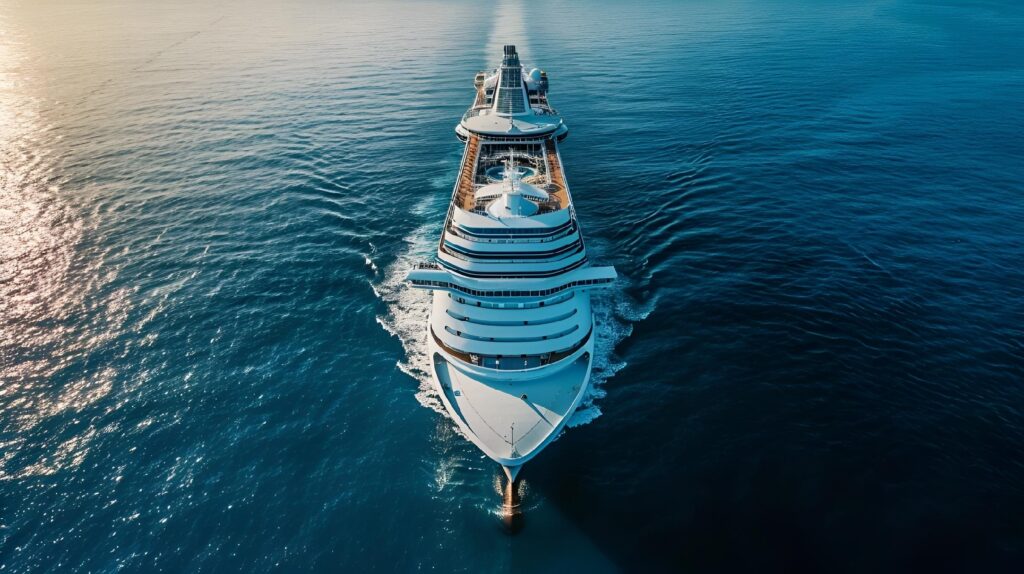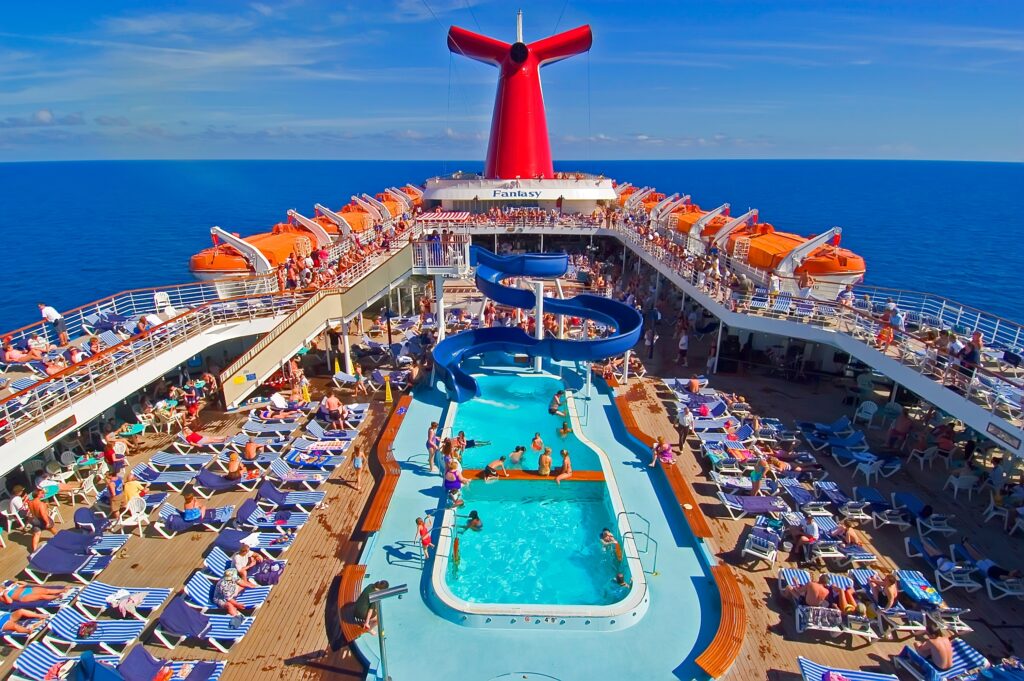Maison Law helps people through the legal process when they’re hurt in accidents throughout California. Our coastline is more than just a pretty view—it’s also a major launch point for cruise vacations. Many of these trips begin in ports in Los Angeles, San Diego, Long Beach, or San Francisco. For most people, it’s a chance to relax and make memories, but not every trip goes as planned. When you’re hurt, you have options–and our team can help you get started with a free consultation.

Should You Get a Lawyer If You’re Hurt on a Cruise in California?
If you’re in that situation, you should think about talking to our lawyers. We can help you by:
- Finding out what went wrong – We collect details, talk to witnesses, and review any reports to understand how the accident happened.
- Counting every cost – We help track all the ways the injury has affected you—doctor bills, time off work, stress, and long-term impacts.
- Handling the cruise line – You don’t have to deal with them. We take over all conversations so you don’t have to worry about what to say or who to trust.
- Taking action if needed – If the cruise line refuses to take responsibility, we’re ready to step in and push for what’s fair.
Getting hurt on a cruise ship or boat in California is never part of the plan—but it happens more often than you’d think. When it does, having the right legal help can make things a lot easier for you and your family.
What Cruise Ships Leave From California?
Before we get into the legal side of things, it’s helpful to look at the data behind cruise excursions in California. According to research from the Cruise Lines International Association (CLIA):
- 54 million people departed for cruises from California ports in 2024.
What this means is that hundreds of thousands of travelers set sail from California ports each year, mostly on:
- Carnival Cruise Line – Carnival regularly sails from Long Beach to destinations like Mexico and Hawaii.
- Princess Cruises – Princess Cruises is headquartered in California and known for longer trips along the West Coast, Alaska, and beyond.
- Holland America Line – Holland America Line has seasonal voyages to Alaska and the Pacific Coast from San Diego and San Francisco.
- Norwegian Cruise Line (NCL) – NCL runs cruises from Los Angeles to the Mexican Riviera and Panama Canal.
- Royal Caribbean – Royal Caribbean frequently departs from ports like Los Angeles and offers both short getaways and extended cruises.
That makes cruise-related accidents far more common than most people realize. And when that happens, it can quickly turn a vacation into a legal and medical headache.
How Can You Get Injured on a Cruise Ship?

Given that cruises are so popular in California, it also raises a pretty important point about accidents. How and why do they happen–especially when they’re designed to be a safe and relaxing way to travel. But even with safety protocols in place, accidents still happen—and more often than most passengers expect. Part of the reason is that cruise ships, especially those departing from California ports like Long Beach, Los Angeles, and San Francisco, pack a lot into one floating space. Between the onboard activities, pool decks, moving parts, and off-ship excursions, there’s a lot going on—and a lot that can go wrong if safety measures fall short, like:
- Slip and falls – Wet decks, slick dining areas, and unmarked hazards can lead to serious falls, especially when the ship is in motion.
- Pool or waterslide injuries – Onboard water features can be fun, but lack of supervision, design flaws, or slippery surfaces often cause injury.
- Illnesses from food – Passengers sometimes get sick from undercooked or contaminated food, or experience severe allergic reactions when safety protocols aren’t followed.
- Missing guardrails – Rare but serious. A missing or malfunctioning guardrail or inattentive crew members can contribute to someone falling overboard.
- Other illnesses – Tight quarters can cause viruses like norovirus to spread quickly when sanitation isn’t properly maintained.
- Accidents on shore – From ziplining to snorkeling, shore activities promoted by the cruise can lead to injury if they’re poorly run or not adequately vetted.
- Security problems – Assaults and other safety threats can happen if a cruise line fails to provide proper security or investigate complaints.
- Mechanical problems or fires – Malfunctions in elevators, engines, or onboard systems can cause injury, especially if crews weren’t prepared.
Cruise lines are responsible for keeping their passengers safe—both on the ship and during sponsored excursions. When something goes wrong, it often comes down to whether the cruise company or crew took reasonable steps to prevent it. And that’s where liability comes in.
Who’s Responsible If You’re Hurt on a Cruise Ship That Leaves from California?
More so than a lot of other accidents, ones that happen on a cruise ship brings up a lot of different questions, like:
- Who’s responsible?
- What laws apply?
- What are your rights?
The answers to these questions, like a lot of legal questions, depend on the circumstances. Many cruise injuries fall under what’s called “maritime law,” which is different from California’s injury laws. But if your accident happened because of negligence, California law may still apply—especially before the ship leaves port or if the cruise company is based in the state.
Cruise ships are legally considered “common carriers” in California. That means they have a:
- Higher duty to keep passengers safe, similar to how airlines or trains are held to strict safety standards.
If that duty is broken, and you’re hurt as a result, you may be able to file an injury claim. Depending on what happened, your claim could involve:
- The cruise line or the company that owns the ship
- Individual crew members
- Terminal operators at California ports
- Onboard vendors, like shops or restaurants
- Equipment manufacturers
- Security staff or other passengers
These cases can get complicated quickly, especially when multiple parties are involved. That’s where we come in. Our California cruise ship accident lawyers know how to sort through the legal details and help you understand who may be responsible for what happened.
How Does a Cruise Ship Injury Claim Work in California?
Even though cruise accidents are unique, the legal process for injury claims in California follows a familiar path. Whether your injury happened while boarding, onboard, or during an excursion, the first step is often filing:
- An insurance claim with the cruise line or another responsible party.
- A personal injury lawsuit.
If you were hurt during a cruise out of California, you may be able to recover:
- Medical expenses (like ER visits, surgery, rehab)
- Lost income if you had to miss work
- Property damage
- Pain and suffering
- Emotional distress
- Loss of enjoyment of life or companionship
- Wrongful death expenses
Like any personal injury case in California, there’s a deadline for taking legal action. The state’s statute of limitations gives you two years from the date of the injury to file a claim.
How Does Maritime Law Change Your Options?
Simply put, maritime law can override what you’d expect under California’s injury laws, especially as it pertains to:
- Time limits – Maritime law often limits you to just six months to notify the cruise line and one year to file a lawsuit. These deadlines are usually written into the fine print of your cruise ticket. If you miss them, your case could be thrown out—even if it’s valid.
- Where and what you can file – In California injury cases, you typically file in your local county court. But cruise lines often require you to file your lawsuit in a specific court across the country—like in Florida—even if your cruise departed from a California port. Your ticket acts like a legal contract, and it can limit your rights before you even step onboard.
Even with these limitations, it’s vital to understand that you still have legal options. And while our team can help you from start to finish, there’s key pieces of information that you can get yourself.
What Pieces of Information Am I Going to Need After a Cruise Ship Accident?

Getting hurt on a cruise ship can feel especially disorienting. You’re not just away from home—you’re also literally in unfamiliar waters. But the steps you take right after the accident can make a big difference. Whether your injury happened while the ship was still docked in California or out at sea, here’s what you’ll want to hold onto:
- Photos or video of what happened – Try to document the scene as soon as possible. That includes pictures of your injuries, the area where it happened (like a wet deck, broken step, or crowded hallway), and anything else that helps explain what went wrong.
- Names and contact information – If anyone saw what happened, ask for their name and number. You should also try to get details for any crew members involved, plus anyone who took your report.
- Cruise ship incident reports – Most cruise lines have onboard medical teams or security staff who document injuries. If you filled out a report, or if someone else did on your behalf, ask for a copy before you leave the ship.
- Medical records – Save everything. That includes medical care you received onboard, as well as any ER visits, urgent care stops, or follow-ups once you got back home. These records show the full scope of your injury and recovery.
- Travel documents – Keep your itinerary, boarding passes, excursion confirmations, and receipts. These can help show how the injury impacted your trip—especially if you missed part of the cruise or had to cut your vacation short.
Even if your cruise has ended and you’re back in California (or home in another state), it’s not too late to take action. Our team can help you gather additional records from the cruise line, follow up on witnesses, and deal with the complex layers of maritime law—without you needing to go back to the port or ship yourself.
Legal Help After a California Cruise Ship Injury
When you book a cruise that departs from a port in California, the goal is simple: to relax, unwind, and enjoy the trip. You’re trusting the cruise line to keep you safe while you do that. But when something goes wrong—whether it’s a slip on a wet deck, an illness from unsafe food, or an accident during an excursion—that trust can be broken in an instant. At Maison Law, we understand what you’re going through and will be there to help you through the uncertainty. Get started today with a free consultation.
